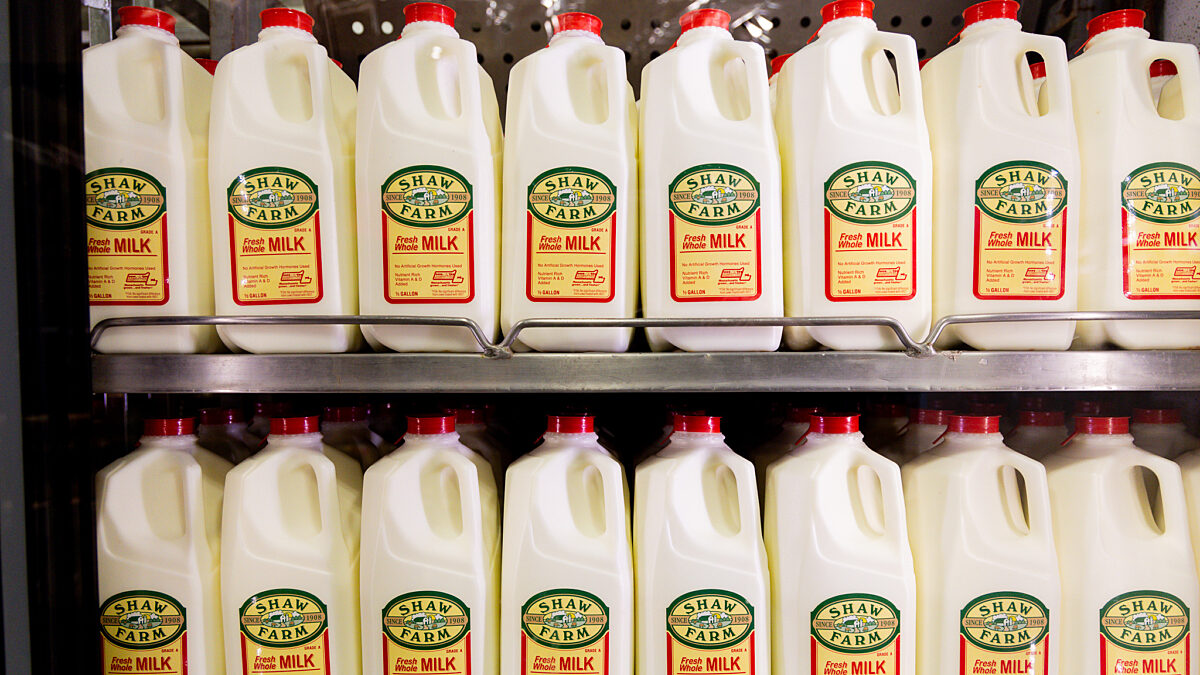Whole Milk May Be Coming Back to Schools
TOPICS
MilkDaniel Munch
Economist

photo credit: AFBF
Daniel Munch
Economist
More than a decade after USDA regulations banned whole milk from school menus, Congress is considering a comeback. The Whole Milk for Healthy Kids Act would overturn 2012 rules that limited schools to fat-free or 1% milk, aiming to revive a category losing ground and reconnect kids with milk’s taste and nutrition.
Behind the debate is a market challenge: U.S. milk output is hitting record highs while fluid consumption falls. Allowing whole milk could provide a small but meaningful outlet for butterfat — key to farm revenue — and create new opportunities for local dairies.
Shifting Dairy Trends
Americans drink far less milk than they used to — down nearly 50% since 1975 and 28% since 2010. Cheese, butter and yogurt consumption has surged, but fluid milk use continues to decline, partly due to changing breakfast habits. Whole milk is the exception: from 2013 to 2024, sales grew 16% while skim and reduced-fat options plunged. Whole milk’s share of fluid sales rose from 27% to 38%, driven by interest in protein-rich and minimally processed foods and even appetite-suppressing drug regimens that prioritize fuller-fat, higher-protein options for satiety and sustained energy.
How Whole Milk Disappeared
The National School Lunch Program serves nearly 30 million students daily and accounts for about 7.5% of U.S. fluid milk sales, making its standards influential. In 2012, USDA rules under the Healthy, Hunger-Free Kids Act restricted school milk to fat-free or 1%, banning whole and 2% options. Later updates allowed 1% flavored milk, but higher-fat varieties remain prohibited.
Even modest gains in school milk sales strengthen fluid milk markets, boost butterfat utilization and improve returns to farmers.
Milk consumption dropped sharply after the change. From 2008 to 2018, weekly servings per student fell 15%, with the decline accelerating 77% after the restrictions. When kids skip milk, schools miss nutrition goals, dairy demand weakens and unopened cartons add to food waste and costs.
The Whole Milk for Healthy Kids Act
The bipartisan Whole Milk for Healthy Kids Act would let schools serve whole, 2%, 1%, or skim milk, flavored or plain, as part of reimbursable meals. It also exempts milkfat from saturated-fat limits and bars sourcing from Chinese state-owned enterprises. The Senate approved the bill in mid November and it now moves to the House. Importantly, it doesn’t require schools to switch — just gives them the option. Adoption would likely be gradual, shaped by local preferences and budgets.
Market Impact
Even partial adoption could shift dairy demand. In 2024, schools served nearly 4.9 billion lunches, with 85% of students choosing milk — mostly skim or 1%. Whole milk contains about three times more fat than 1%, so reintroducing it would pull more butterfat into fluid use instead of butter, cheese, or powder. If 25%, 50%, or 75% of schools adopt whole milk, annual butterfat demand could rise by 13–18 million, 25–36 million and 38–55 million pounds, respectively. A near-universal shift could divert 45–66 million pounds of butter — about 2–3% of U.S. production — into bottled milk.
Even small increases matter in an oversupplied market. More whole milk shifts butterfat into higher-value fluid milk channels, simplifying processing and reducing the amount of lower-value skim powder produced. For smaller dairies, it could create local farm-to-school opportunities.
Bottom Line
The Whole Milk for Healthy Kids Act wouldn’t dramatically change overall milk use, but it targets one of the few areas where demand can grow. Even modest gains in school milk sales strengthen fluid milk markets, boost butterfat utilization and improve returns to farmers. With milk production at record highs, giving schools the option for whole milk helps absorb supply where it matters most — connecting kids with milk they enjoy and farmers with stronger milk checks.
Daniel Munch is an economist at the American Farm Bureau Federation. This column was adapted from a Market Intel report published by AFBF.
Top Issues
VIEW ALL